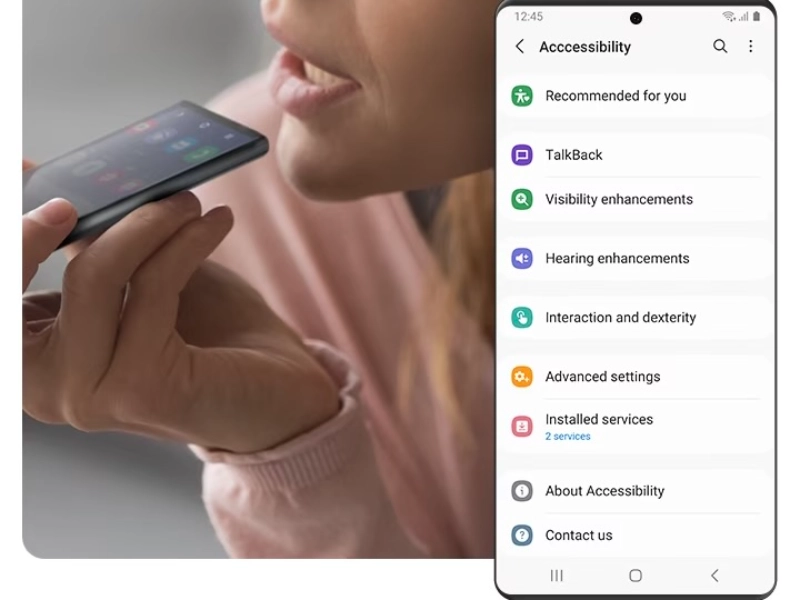- Bixby is Samsung’s virtual assistant, designed to operate seamlessly across various Samsung devices, including smartphones, tablets, wearables, etc.
- Initially announced in 2017 alongside the launch of the Samsung Galaxy S8 and S8+ smartphones, Bixby offers a suite of features such as Bixby Voice, Bixby Vision, and Bixby Home.
- Since its launch alongside the Samsung Galaxy S8 and S8+ smartphones, Bixby has evolved through updates like Bixby 2.0 and Bixby 3.0, enhancing its capabilities.
Bixby is a virtual assistant for Samsung, enabling users to execute tasks through voice prompts, manage incoming calls, operate the camera hands-free, and perform various other functions. Debuting with the Galaxy S7 series in 2017, Bixby has since become an integral component of the Galaxy product line. It is accessible across a diverse range of Samsung devices, including foldable smartphones and Galaxy tablets.
what is Bixby?
Bixby is a virtual assistant developed by Samsung Electronics. It operates across various Samsung devices, primarily mobile devices but also some household appliances like refrigerators. The suite includes Bixby Voice, a voice assistant, as well as contextual and visual search features such as Bixby Vision, Bixby Text Call, Bixby Routines (now called Modes and Routines), and Bixby Home (now replaced by Samsung Free).
Bixby was announced by Samsung on 20th March 2017, alongside the launch of the Samsung Galaxy S8 and S8+ smartphones and the Samsung Galaxy Tab A. Initially, it could be sideloaded onto older Galaxy devices running Android Nougat. The Bixby Button, initially reprogrammable, lost this functionality with a firmware update just before the phone’s release, although it could still be remapped using third-party apps.
The Korean version of Bixby was launched on 1st May 2017, with plans for the US release postponed due to difficulties in fully understanding the English language. The English version was eventually rolled out in July 2017, followed by a Chinese language version later that year.
In October 2017, Samsung unveiled Bixby 2.0 during its annual developer conference in San Francisco. This new version was integrated across Samsung’s range of connected products, and third-party developers were granted access to develop applications for Bixby using the Samsung Developer Kit. Bixby 3.0 was introduced with One UI 3 in early 2021, separating the Home and Reminders features from Bixby.
Also read: Samsung to enhance Bixby virtual assistant with gen AI
Functionality of Bixby
Bixby Voice: Bixby provides tailored information about the weather, meeting reminders, news articles, and more using artificial intelligence. It can recognise individual voices, allowing for personalised responses.
Bixby Vision: Bixby Vision is an augmented-reality camera capable of identifying objects in real-time. It offers features like online purchasing suggestions, text translation, QR code reading, and landmark recognition.
Bixby Home: Formerly known as “Bixby Home” and now replaced by “Samsung Free,” this feature provided users with a vertically scrolling list of interactive information such as weather updates, fitness activity tracking, and controls for smart home devices. “Bixby Touch” offered recommendations based on intelligent recognition, allowing easy access to services like translation, online shopping, and media.
Also read: AI advances bring Samsung’s memory chip business back to life
Pros and cons of Bixby
Pros: Bixby boasts seamless integration with a wide array of Samsung devices, including smartphones, tablets, wearables, smart TVs, and even household appliances like refrigerators. This deep integration allows users to access Bixby’s features across various Samsung products, enhancing the overall user experience.
Bixby demonstrates impressive contextual understanding, enabling it to interpret and execute user commands based on the context of the situation. Whether it’s initiating a phone call, setting a reminder, or adjusting device settings, Bixby adapts its responses and actions to suit the user’s needs effectively.
One of Bixby’s standout features is its ability to perform device-specific tasks with precision and efficiency. Users can leverage voice commands to control various functions and settings on their Samsung devices, such as adjusting screen brightness, launching apps, or composing text messages, making it a versatile tool for device management.
Bixby offers comprehensive support for voice commands across a wide range of apps and settings on Samsung devices. Whether it’s sending emails, browsing the web, or adjusting system preferences, users can interact with their devices hands-free using Bixby Voice, enhancing convenience and accessibility.
Cons: While Bixby offers robust functionality within the Samsung ecosystem, it may lag behind other voice assistants in terms of ecosystem breadth and compatibility. Users may find that Bixby has fewer integrations with third-party services and devices compared to competitors like Google Assistant or Amazon Alexa, limiting its overall utility.
Bixby may face limitations when it comes to supporting third-party apps and services, particularly those outside the Samsung ecosystem. While efforts have been made to expand Bixby’s compatibility with external applications, some users may find that their favorite apps lack full integration with Bixby, potentially limiting its usefulness in certain scenarios.
Unlike some other voice assistants that are platform-agnostic and available across a wide range of devices, Bixby is primarily designed for Samsung devices. This means that users who own non-Samsung devices may not have access to Bixby or may experience limited functionality if using it on non-supported devices, reducing its accessibility to a broader audience.

